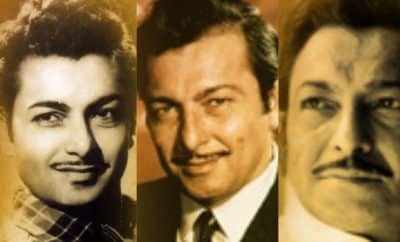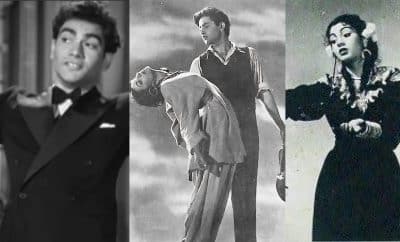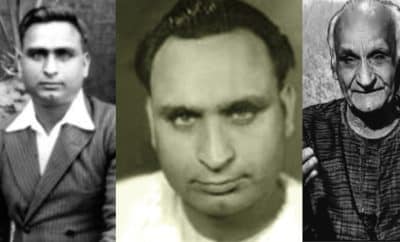Song Sketch
Ajnabi Kaun Ho Tum – Sweekar Kiya Maine – The Joy of Loving a Known Stranger
Imagine that you are required to stay with a stranger. (Oh, I just heard you whisper – “why the hell would I do that?”) Now rather imagine that you are forced by the circumstances to stay with a stranger, only for your benefit. (I am sure you are now really imagining as I did not hear any whisper). If it is a forced cohabitation, you would certainly try to adjust to the situation and get more insight into the stranger. What if, in this attempt, you fall in love with the stranger? Even if you don’t know whether the feeling is mutual, it would certainly thrill you!
The song “Ajnabi, kaun ho tum?” from Sweekar Kiya Maine (1983) is exactly all about this.
Gopika (Shabana Azmi), who has no support in the ocean of people in Mumbai and has already gone through a terrific experience, is staying with a stranger, Kishankumar (Vinod Mehra) who is posing as her husband, so as to protect her from evil men around. While they are just enacting the roles of husband and wife, he has swept her off her feet and she has started developing “the thing” for him. She starts expressing herself in the terrace on a pleasant windy evening in Lata Mangeshkar’s sweet voice –
Ajnabi, kaun ho tum? Jabse tumhen dekha hai,
Saari duniya meri aankhon mein simat aayi hai…
Who are you, oh stranger? My eyes are encompassing the whole world, since I have seen you.
Tum to har geet mein shaamil the tarannum ban ke,
Tum mile ho mujhe phoolon ka tabassum ban ke,
Aisa lagta hai ke barson se shanaasaai hai…
Perhaps, you were already there in the form of melody in every song of mine. I can now see your smile in the blooming buds. It’s just a different form in which you have met me now, though you seem to be known to me for ages.
Khwaab ka rang haqiqat mein nazar aaya hai,
Dil mein dhadkan ki tarah koi utar aaya hai,
Aaj har saans mein shahnaai si lahrayi hai…
My dreams are coming true. You are now so close to my heart that I can feel you every heartbeat. Every breath of mine now sings like a clarinet announcing the arrival of something auspicious.
Koi aahat si andheron mein chamak jaati hai,
Raat aati hai, to tanhaai mahak jaati hai,
Tum mile ho, ya muhabbat ne ghazal gaayi hai?
Your thoughts are like the footsteps illuminating my dark loneliness for a few moments. They perfume my loneliness in the nights. You are like a ghazal that love itself has sung for me.
Shabana Azmi’s simplistic beauty is the highlight of the song. She expresses Gopika’s feelings efficaciously. Though her natural acting talent is always visible in all her roles, the way she presents any song on the screen just through her body language and speaking eyes is astonishing. It seems as though she is actually living the song, and this one is not an exception.
So far as the musical aspects are concerned, this is yet another saccharine composition by Usha Khanna in her gleeful style. Simple yet effective orchestration comprising santoor, violins and clarinet supported by softly swaying beats of tabla creates a pleasant aura. Lata Mangeshkar’s honeyed and youthful rendition adds to it. Can you believe that she was in her mid-fifties when the song was recorded? An extra pinch of sugar that she always added to Usha Khanna’s compositions can be felt here too.
Nida Fazli’s uncomplicated but romantic lyrics add to the overall sweetness of the composition. The imagery like “geeton mein tarannum” (melody in a song) and “phoolon ka tabassum” (blooming of flowers) showing how close and inseparable she considers him takes the romance a few notches up.
The song perfectly describes the joy and excitement accompanied by a tad of thrill of falling in love with someone who is known but is yet a stranger.




Sudhir kulkarni
September 18, 2021 at 11:53 am
We are no stranger to the tune /meter which becomes ethereal in Lataji’s vintage voice of 80s and I wonder ‘O pyari dhun , aap to aise na thay when heard in the tri_andem of Rafi/Manhar/Hem lata with due respect to their capabilities. Also runs ‘saath saath’ with ‘tum ko dekha to yeh khayal aaya’. Thanks to the orchestral masala the film music has such songs are easily digestible for a musically non technical like me. Thanks Yogesh for sharing.